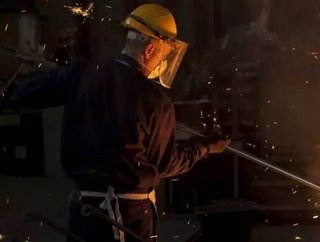REPORT: How Rio Tinto Improves Operational Efficiency

Establishing long-term relationships with universities to create smart technology is helping Rio Tinto slash idle time in operations
Rio Tinto is a powerhouse multinational mining and metals company based in the United Kingdom. They have operations on six continents and own a slew of mining operations through a complex web of wholly and partly owned subsidiaries.
The mega-successful Rio Tinto has thrived in the mining industry by continually developing new and efficient ways of improving its operations. The company has launched a diverse range of initiatives intended to enhance productivity as well as investing in partnerships and innovative technology. These investments aim to increase energy efficiency and capital productivity, but also improve processes and operator safety, along with extending the life of a resource.
Smart Technology
Through the years, Rio Tinto has worked meticulously to improve idle time in operations. Recently, the company rolled out a new rail technology in the Pilbara region of Western Australia that will greatly assist in this purpose.
The new technology for Rio Tinto’s 1,500km rail network, which connects its 15 mines and three port facilities, will allow train to drive at optimum speeds as well as improving its handling capability, and reducing braking distances and delays. The company has fitted its 173 locomotives on the network and more than 10,500 ore cars with the time-saving system.
Rio Tinto is also working to install AutoHaul™, the world’s first fully autonomous, heavy-haulage, long-distance railway network. The project will vastly benefit productivity, fuel efficiency and safety.
The company has also incorporated Driver Assist, a monitoring and control system that uses smart technology known as LEADER (Locomotive Engineer Assist/Display Event Recorder). The system monitors a massive amount of “live” track information and conditions, displaying it to the driver in real-time.
The system monitors information such as:
- track geometry, such as the gradient or curve
- projected speeds ahead of the train in relation to signals and speed restrictions
- the properties of the braking systems
- monitoring and reporting to the driver the in-train forces
The smart technology will not only improve transportation times for the railroad, but reduce the time needed for driver training.
Mine of the Future
In 2008, Rio Tinto launched its Mine of the Future™ program in search of new avenues for improving productivity and efficiency in mines. The three key objectives of the program circled around: autonomy and achieving massive efficiency in surface bulk mining; increased efficiency in recovery by sorting waste before it reaches the processing plants; and tunneling faster to reach orebodies in less time. Through technological advancements, Rio Tinto believes this plan of action can be easily accessible.
At the company’s Kennecott Utah copper mine, Rio Tinto has began testing a new technology called Copper NuWave™, a mineral-sorting process that maximizes ore recovery while reducing waste. The technology uses microwaves to stimulate copper species within individual rocks, allowing a computer to determine the rocks’ copper content. Rocks rich in copper are processed while rocks containing low or no copper are discarded. The computerized process will radically speed up ore processing times as well as cutting out a considerable amount of water and energy consumption involved in the crushing and processing system.
Rio Tinto’s head of Innovation, John McGagh, said: “Copper NuWave™ is a good example of efficient and responsible mining, and will provide Rio Tinto with significant benefits as copper grades decline worldwide.
Working together
Rio Tinto is involved in wealth of partnerships with educational institutes. The company has partnered with the University of Nottingham to form the Rio Tinto Centre for Emergent Technologies program. The five-year, multi-million dollar program seeks to establish new technologies for improving ore processing times. The company has worked with the University in the past, including the Mine of the future to collaborate on new technology such as Copper NuWave™, MicroHammer™ and WaveStream™.
Rio Tinto has also partnered with the Imperial College in London to investigate fundamental principles and develop efficient technologies for extracting and processing materials.
“We know we cannot rely on existing technologies and that we must innovate,” McGagh said. “We need new processes and approaches, and that requires new thinking – the kind of thinking that comes from internationally renowned centres of learning such as Imperial.”
Through new technologies and efficient framework, Rio Tinto is working to maximize its operational processes and increase productivity while lowering downtime.






